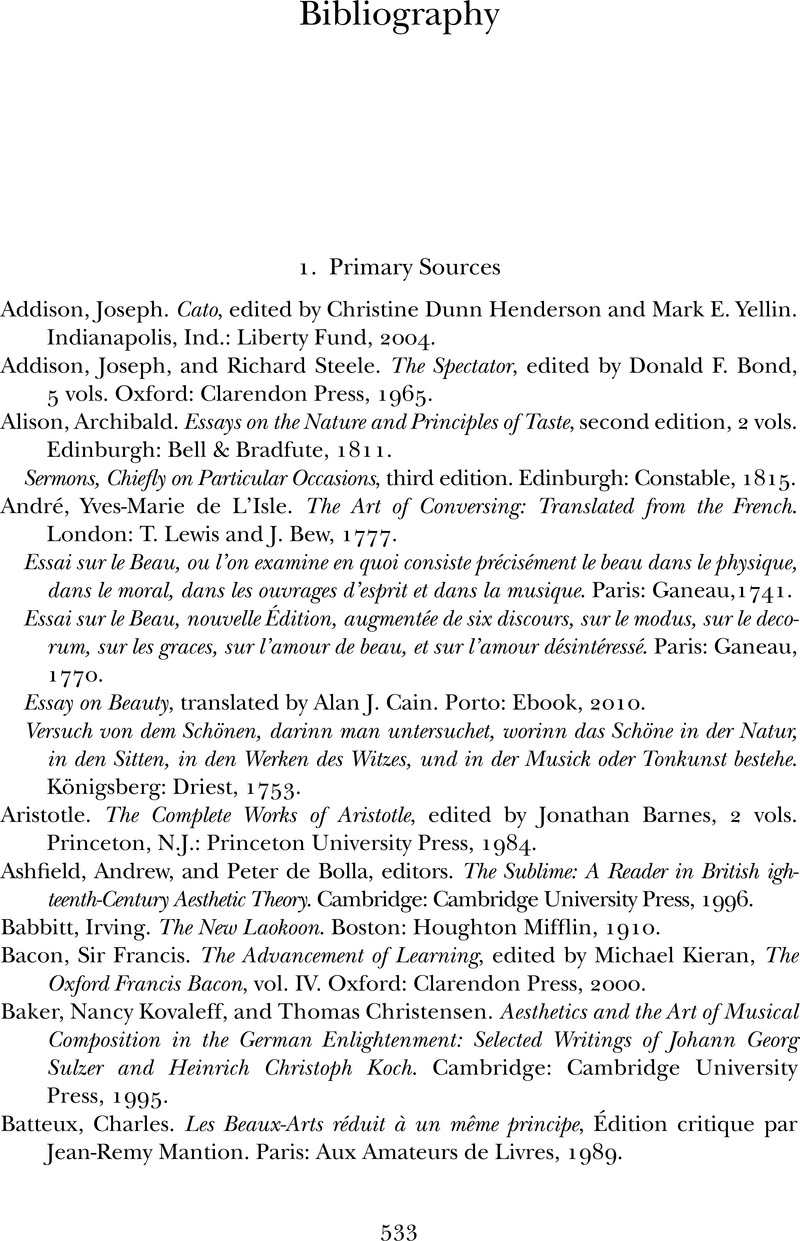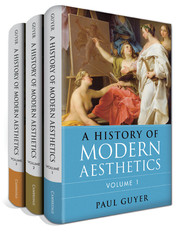Book contents
- Volume 1 The Eighteenth Century
- Frontmatter
- Epigraph
- Contents
- Acknowledgments
- Introduction
- 1 Prologue
- Part One Aesthetics in Britain, 1725–1800
- Part Two French Aesthetics in Mid-Century
- Part Three German Aesthetics between Wolff and Kant
- Part Four Kant and After
- Bibliography
- Index
- Volume 2 The Nineteenth Century
- Volume 3 The Twentieth Century
- References
Bibliography
from Volume 1 - The Eighteenth Century
Published online by Cambridge University Press: 05 June 2015
- Volume 1 The Eighteenth Century
- Frontmatter
- Epigraph
- Contents
- Acknowledgments
- Introduction
- 1 Prologue
- Part One Aesthetics in Britain, 1725–1800
- Part Two French Aesthetics in Mid-Century
- Part Three German Aesthetics between Wolff and Kant
- Part Four Kant and After
- Bibliography
- Index
- Volume 2 The Nineteenth Century
- Volume 3 The Twentieth Century
- References
Summary

- Type
- Chapter
- Information
- A History of Modern Aesthetics , pp. 533 - 554Publisher: Cambridge University PressPrint publication year: 2014



